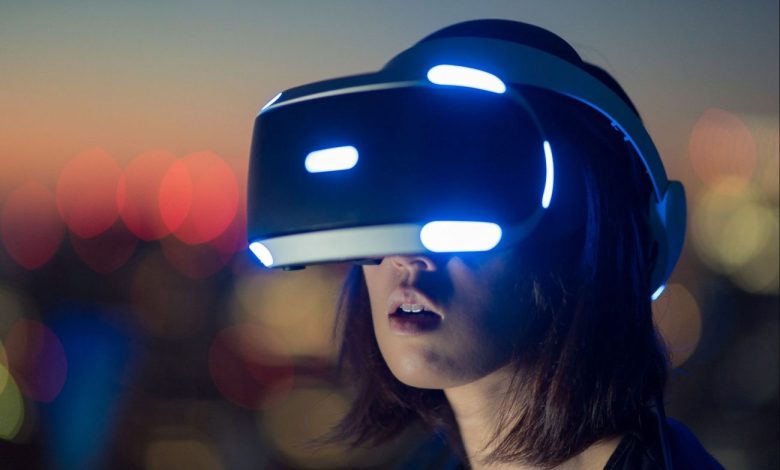Incredible Ways Different Sectors can Use AR for Education and Training

The use of Augmented Reality (AR) is fast changing. Especially with the possibilities within education and training.
AR enhances the learning experience. By adding digital elements to the real world. Some educators and trainers are already using this technology to create engaging digital content.
Anything that cannot be achieved with traditional training is done easily with AR technology. From 3D textbooks to human body models. AR can be used to create an exciting learning experience.
When learning is experiential and exciting like this, knowledge retention improves greatly.
As per a study, AR/VR in the education sector is expected to increase from 9.3 billion USD in 2018 to 19.6 billion USD by 2023.
Let’s take a look at how different industries can use AR for education and training.
Incredible Ways Different Sectors can Use AR for Education & Training
Education and training are core to many industries. Because they present an opportunity to expand the knowledge base.
Today, various industries are exploring AR-based digital solutions. Especially for effective education.
Realwear Navigator 500 is the best example of a high-quality AR gadget.
Here are the different ways AR is used to enhance education and training:
1. AR and Classroom Education
AR can turn a regular class into an engaging session for both trainers and learners.
It can help teachers better explain the subject. And provide a visual representation of the learning material. Learners focus on the practice. Instead of just theory. Besides, AR-powered classes report fewer distractions. And keep the learners engaged.
You can build AR apps for almost every subject. Including physics, chemistry, geometry, grammar, zoology, and even programming.
2. AR and the Space Education
Did you know that NASA’s astronaut candidates have to complete a few years of training here on Earth?
And the training includes many activities. Workouts, and assignments are done in a simulated space environment.
The space industry uses AR to train astronauts. And engineers performing complex tasks that require advanced technical skills and accuracy.
AR increases the potential of the space sector. And help to decrease crew training requirements.
3. AR and Medical Education and Training
AR is one of the up-and-coming digital healthcare technologies and is already revolutionizing how we educate and train our medical staff.
There are many use cases of AR technology in medical education. Some of them include:
- Creating human body models to learn anatomy in detail.
- Providing additional training opportunities with the help of simulations.
- Practicing surgeries on virtual patients.
- AR-enabled training videos to help physicians learn about the latest tools and methods.
4. AR and Military Training & Education
Consistent training is essential to the military. Military training requires a specific environment and location for the soldiers.
But creating that environment and putting the soldiers in that particular location for training may not always be possible. This is where Augmented Reality plays an important role.
AR is used to create an environment for training soldiers and train them more often without putting their lives in danger.
AR devices emulate a combat environment for the soldiers by projecting digital images of weapons, enemies, and vehicles onto their AR glasses without exposing them to real danger.
It helps save travel expenditure by the military and reduces the need to spend on special equipment because AR can add virtual objects.
5. AR and Manufacturing Training
The manufacturing sector provides some wonderful examples of how AR is used in training—learning to operate complex machinery in manufacturing always requires lengthy preparation and a lot of theoretical knowledge.
But modern manufacturing workers can complete their tasks using real-time instructions projected on AR screens.
Besides, companies can relax the stringent eligibility criteria while hiring employees. Manufacturing companies can now hire employees with basic skills and experience and train them on the go using AR instructions.
Get Realwear Navigator from Realtime AR Australia for better tablet handling.
6. AR and Museum
Audiences everywhere crave interactivity. Augmented Reality enhances the museum’s experience for the audience.
It is done by adding AR content to the museum’s objects – statues, paintings, historical artifacts, documents, and architectural monuments.
Museums create user engagement and increase the visitors’ interest in artistic and cultural heritage. AR content is easily accessed with the help of a smartphone camera.
7. AR and Retail
Training is an important activity in the retail industry. Retail companies look for ways to train employees. In order to maximize the use of their time. And minimize the mistakes made on the sales floor.
AR technology offers a dynamic alternative to traditional retail training. They offer risk-free, real-life scenarios. That sharpens the employee’s skills in retail.
A Realwear Workband is the best choice in this case.
8. AR and Health & Safety
The practice of health and safety in organizations has always involved manual processes. But with technologies like AR, the focus has shifted to innovation.
Health and safety training in the office is not about watching and learning through a video.
Benefits of AR for Training and Education
AR’s seamlessness in digitizing objects within the “real world” encourages interactivity and attention, never experienced before. Incorporating it into education and training has improved learning efficiency. It creates an environment where learners can have a hands-on learning experience.
Here are the benefits of using Augmented Reality in education and training.
1. Engaging Learning Experience
Technologies like AR are meant to raise engagement levels in learners. It is because it allows instructional designers and game designers to combine fun with eLearning content delivery.
Not only is the AR content visually attractive and fun to work with. But it also appeals to learners because of the risk-free element of learning. It is risk-free because learners can make the same mistakes as many times as they need to learn how to perform an action the right way.
So, rather than just reading from books or listening to lectures, AR-enabled content allows learners to practice with headsets and goggles’ help. This increases user engagement and improves the learning experience.
2. Effectiveness of Learning Materials
Companies can develop interesting learning solutions with AR. Pointing the phone camera at a specific text of the training manual may lead to additional materials. Or resources popping up on the users’ screen. It is useful to train employees about various products, services, and solutions of the company.
AR training is more effective than traditional methods. AR learners have a better recall rate as compared to learners from conventional methods.
3. Affordable learning
Educational material is generally quite expensive. Not all educational institutions can afford to build, purchase, and maintain them. But with AR-enabled learning, learners only need mobile devices like smartphones or tablets, Internet connection, and AR apps. This makes AR-enabled education accessible.
AR also helps save costs on employee training because all one needs are mobile devices, AR headsets, WiFi, and apps instead of traditional seminars and classes.
Conclusion:
Augmented reality has the potential to improve many aspects of the customer experience, even when that experience happens within the confines of the customer’s living space. It combines the real and virtual world in real-time, with all the visualization capabilities of in-person shopping and all of the ease of staying at home.
In an age of increased reliance on eCommerce, this means that AR is a powerful visualization tool that brands across industries can leverage to improve their relationships with customers and ultimately improve their bottom lines.
But don’t just take our word for it. Below are just a few statistics that indicate that the impact of AR in business is only growing:
- 61% of consumers say that they prefer retailers that provide AR experiences.
- 71% of shoppers say that they would shop more often if they could use AR.
- Using AR technology in eCommerce can increase conversion rates by 40%.





